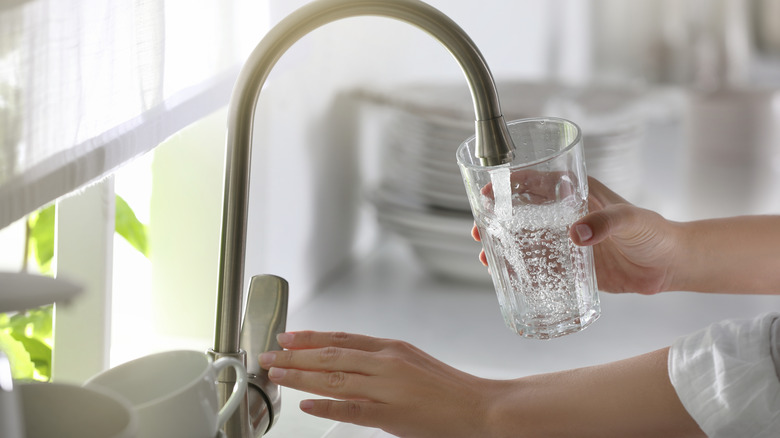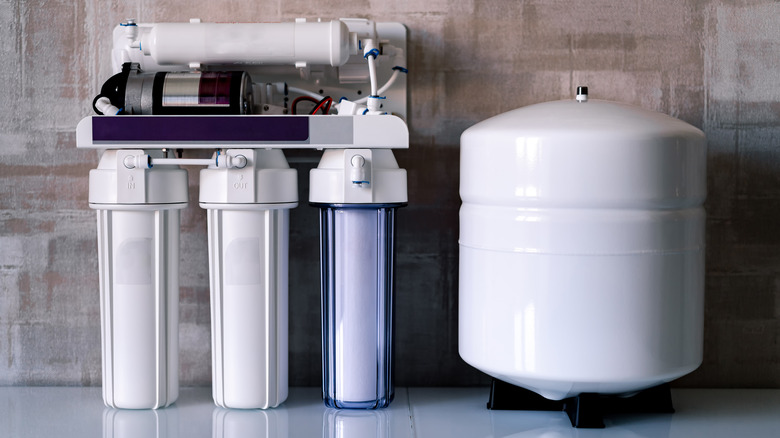How To Filter Your Tap Water
Nowadays, most tap water is safe to drink. The Centers for Disease Control and Prevention (CDC) even claims that the United States boasts some of the safest tap water in the world. This is because all public water systems are carefully regulated by the U.S. Environmental Protection Agency (EPA), which treats various sources of contamination in water before it makes its way to the pipes of your home. The water supplied to your home can come from a variety of sources, including groundwater (which is pumped to the surface through wells) and surface water found in reservoirs, lakes, and rivers. You may also have a private well on your property, which is not part of the public water system.
Although you can rest assured that you likely won't get sick from drinking the tap water in your home, you may still want to filter your water before drinking it. WaterCare points out that if there are heavy metals and other contaminants in the water, filtration will protect you from these toxins while maintaining healthy minerals found within the water.
The Healthy adds that just because your local water plant treats the water doesn't mean that there aren't ways it can become contaminated along the way. This often happens through contact with old pipes that leak lead and copper. The good news is that there are multiple ways to filter your tap water.
Water filtering systems vary in cost
As there are many different ways to filter your tap water, the bottom line comes down to preference and cost, as per Healthline. You can opt for DIY water filter options, which won't set you back much, such as boiling water or using purification tablets. With the former option, you only need to boil the water for one minute before it's ready to drink. In the latter case, the amount of time you let the tablets sit in the water depends on the type of purification product.
If you want to spend a bit more money, consider purchasing a water filter jug or faucet-mounted filter, explains The Healthy. These typically use carbon to remove contaminants from the water, although you will have to manually refill them throughout the day. Slightly pricier is a filter that incorporates reverse-osmosis technology to remove even more toxins. It is typically installed under your kitchen sink and can cost a few hundred dollars to set up.
Those with a hefty budget to dedicate to home water filtration can opt for a whole-house water filter, as per The Spruce. These filtration systems are designed to treat all the water coming into the home, rather than in specific locations within the house. They also rely on more sophisticated technology, often making use of UV light or kinetic degradation fluxion (KDF) filtration methods. Note that you may spend thousands of dollars on this system.


